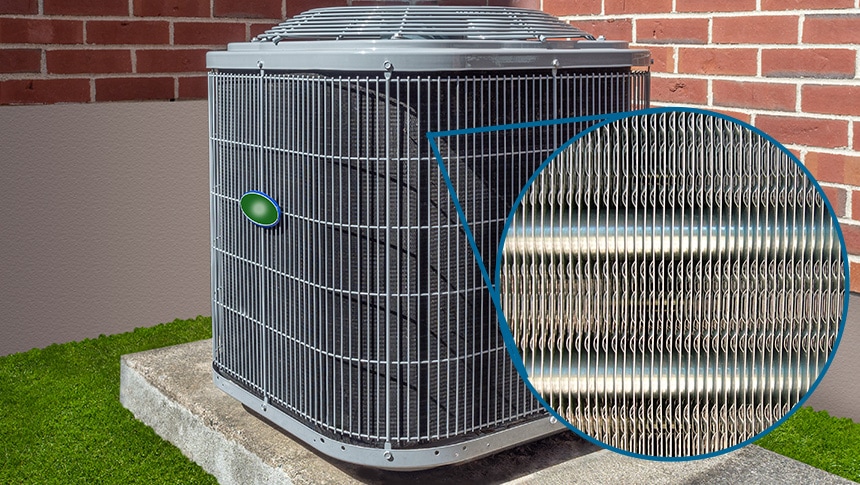Tips for central air conditioner maintenance
Cooling Solutions Updated: May 5, 2022How to make sure your AC system is running efficiently

How to make sure your AC system is running efficiently

Taking simple steps to properly maintain your central air conditioner helps ensure it will run smoothly and efficiently each year when summer comes around. Don’t make your AC system work harder than it should. Follow these tips so you can stay cool all season long and keep your energy costs in check.

Keep an eye on the fins of your central AC system’s outdoor condensing unit––look for the grill-like area with metal fins all along it. These fins are part of the condenser that helps move heat away from the air conditioner. If dirt and debris build up, you can usually clean off the unit by simply using a garden hose with a spray nozzle. We’ve outlined the general steps below but be sure to check your owner’s manual for additional details before cleaning.
Tools to have ready:
Step by step instructions:
1. Cut the power to the outdoor unit or turn off central power.
There should be a local switch to turn off the outdoor AC unit. This switch is typically covered by a grey box mounted to the house near the unit. Or you can find the AC breaker switch in your main breaker panel and switch it off.
2. Clean the fins.
Using a hose with spray nozzle, clean the fins. Always spray water downward from the top, not straight on and not directly into the unit. This is to prevent damage to the thin aluminum fins.
3. Turn the power back on when you’re done.
If none of the panels of the AC unit were removed and no water is inside the disconnect box/switch, then it is fine to turn the power back on right after cleaning. Waiting a few minutes is a good precaution to allow excess water to drain off but not required.
To improve HVAC airflow, you should always keep the area around your outdoor condensing unit clear. Leaves, shrubbery and debris getting stuck in the unit can cause airflow problems by obstructing the equipment. Simply clearing the area and leaving some space around the unit will make a difference to how your AC system performs.
Your AC unit has an evaporator coil located inside the home and attached to the furnace. When the AC unit is on, condensate water generated by the evaporator coil drips down into a pan situated beneath the indoor air handler. Collected water then flows through a condensate drain tube into a connection with the household plumbing system.
If you notice water collecting around your furnace when the AC is running, it’s a sign that the condensate drain tube is clogged and you may want to contact a professional.
For ongoing maintenance, follow these steps to prevent slime build-up and clear existing clogs by using pan tablets (available at most hardware and plumbing supply stores).
Step by step instructions:
1. Add pan tablets to drain pan.
Condensate pan tablets help prevent overflows and water damage caused by plugged drain lines in your air conditioning unit. Simply drop tablets into the condensate drain pan and let dissolve. The air conditioner drain pan is located below the indoor evaporator coils.
2. If you use your AC often, add new tablets monthly during the summer.
Change or clean your filter once a month during high-use seasons to keep your air conditioner working at peak efficiency. Dirty filters overwork equipment, which means you’ll use more energy to cool your home and your indoor air quality won’t be as good. Changing or cleaning your filter is always important, but even more so if you live in an area dealing with wildfire smoke. Check the owner’s manual for filter replacement instructions for your specific system.
Here are some general steps to keep in mind:
